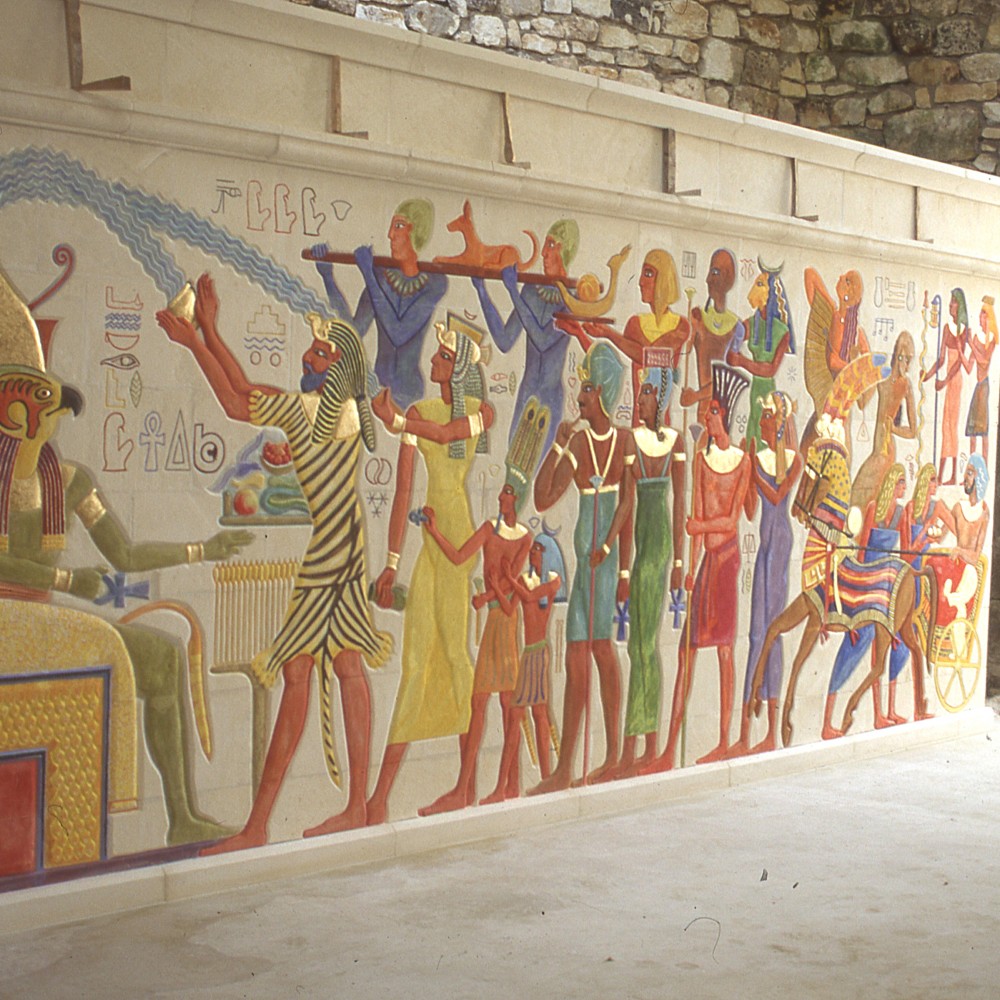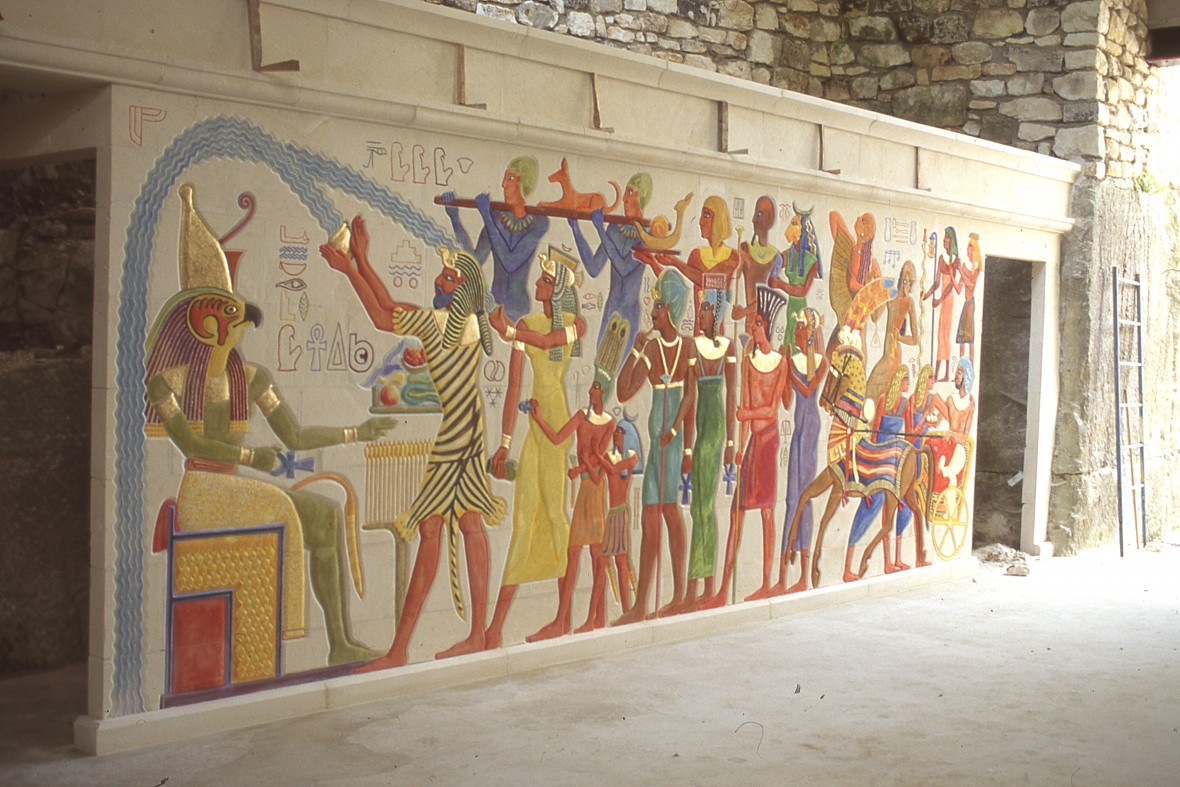Pierrot commissioned this bas-relief work for himself, in a multipurpose hall created by adding to the natural bedrock walls of a small defunct quarry on his property, and covering it all over. It’s amusing to see the scale in the first slide; I once attended a dinner party for about one hundred people there.Pierrot was a fan of Egyptian history, mythology, and arts, and requested an Egyptian frieze. Pierrot and his family and friends are depicted paying homage to the god Horus with that most precious commodity: water. Other gifts and dedications are indicated by the hieroglyphs. The three stages of the work can be seen: drawing on the stone, carving the bas-relief into the drawing, painting it.
In his great hall, Pierrot also wanted a frieze decoration above the Egyptian wall, but to go the entire length of the stone, and we agreed upon a depiction of the history of sculpture. It flowed from right to left due to the situation of the wall; the entrance to the room was on the right. It continued on through Asian, European and contemporary art. However, not feeling very optimistic about the future of sculpture, I made the last image a satellite – those information transmitters crucial to the information age. The “information age” in itself is not responsible for the demise of interest in sculpture, particularly figurative sculpture, but it abetted the suffocating proliferation of other forms of so-called sculpture.

